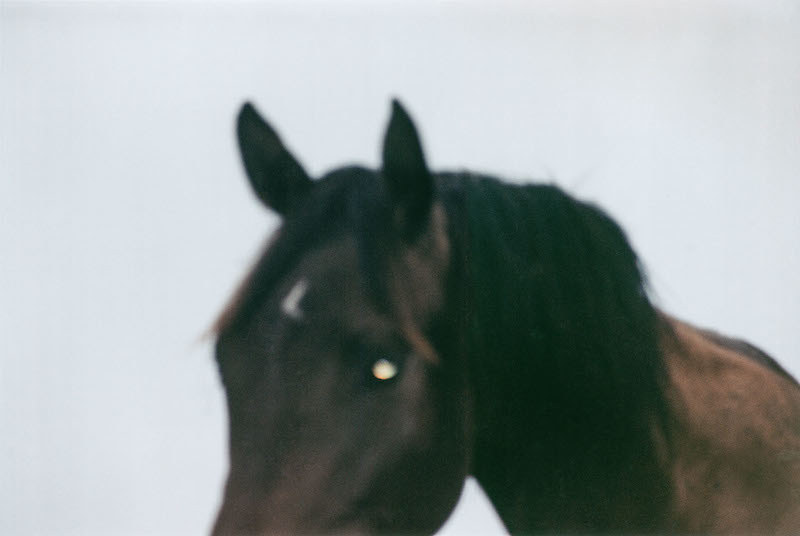 © Jonathan Schmidt-Ott, "~Vollmond"
© Jonathan Schmidt-Ott, "~Vollmond"
If the photographic practice of Berlin-born artist Jonathan Schmidt-Ott needed to be narrowed down to only two words, I would borrow Lukas Feireiss' description of it as "poetic and unpretentious."* But Jonathan's practice usually does not actually allow narrowing down –– it consists of visual sequences, fragmentary stories, unusual perspectives that document moments of emotional importance, without really knowing why these moments seem so important. Jonathan has a talent in assembling not only motifs but also people: we met in 2015 at his project space DZIALDOV, where he showed a couple of his own sculptures that he had developed during the cleaning of his basement. Not long afterwards, I co-curated an exhibition at DZIALDOV together with Katja Kottmann. All of Jonathan's practices – art, curating, books, film-making – have a unique sense of sequencing images or objects, which may be rooted in his original training as a film editor. The following interview took place on occasion of his photography exhibition "~Vollmond" [~Full Moon] at Galerie Michael Janssen in Berlin, where we held an artist conversation.
*Feireiss in SE COSÌ FOSSE, 2018
Anna-Lena Werner: Jonathan, let's talk about your exhibition "~Vollmond" –– 10 years ago you went to Biarritz in the south of France, equipped with a new telephoto lens for your camera. You took a series of mystical, sometimes blurry photos of horses on a field. Can you tell us about the day you took those pictures?
Jonathan Schmidt-Ott: I go to the south of France every year in the summer holidays. Usually there are cows staying on the nearby field, but in that particular year there were six beautiful horses. For years I had already taken pictures with my SLR camera – which I once borrowed from my father and never returned to him – but the effects of the telephoto lens were new to me. It turned certain objects close to me extremely blurry, but gave me the option to take pictures of the animals without being too close to them. I went behind the fence as well, but got afraid once they curiously approached me and tried to keep them at distance with my arms raised up in fear.
ALW: The whole series has a many cinematic elements…
JSO: …I shot the "~Vollmond" series during my studies at the film academy and that might have led me to take frames rather typical to film shots. Close-ups, long shots or "American shots", in which I cut off half of the horses' legs –– a shot that is less common in photography, but typical to the American Western genre.

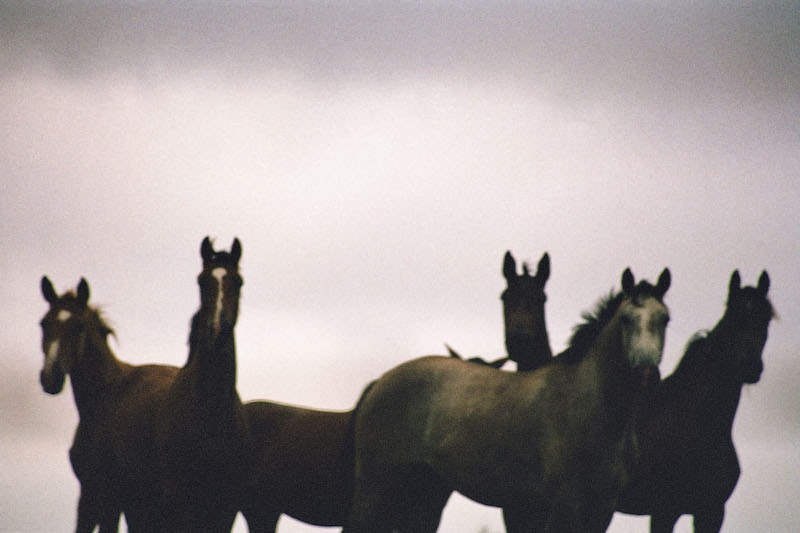 © Jonathan Schmidt-Ott, "~Vollmond"
© Jonathan Schmidt-Ott, "~Vollmond"
ALW: You also described the horse as a symbol of death, referring to its role in silent movies, where its reaction to a loud sound was often shown as to indicate a deadly shot. How much does your initial practice as a film editor influence your photographic work?
JSO: The sequence of images has a high priority for me. This is just as important in an exhibition, as in a book. Which one does the series start with, which one does it end with? What is next to each other? Actually, the whole constellation. I often used the group of horses at the end, because it reminded me of this film historical reference to death.
ALW: Next to the symbolism of death, the exhibition's title "Approximately Full Moon" adds a certain mystical element. How does the title relate to the images shown?
JSO: It was full moon on the day of the exhibition's opening and I felt this would fit very well as a title. Additionally, I took a series of images of the full moon in Berlin from the rooftop of my house. Seeing both of those series next to each other, the flashlight I used photographing the horses reflects in their eyes, like the sunlight reflects on the moon. The flashlight has a certain alienation effect that highlights the image as a photo, but it also underlines that every picture I take can only be a reflection of my own view. This self-reflexive moment in a photograph or a work of art reminds me of the idea of a mise en abyme.
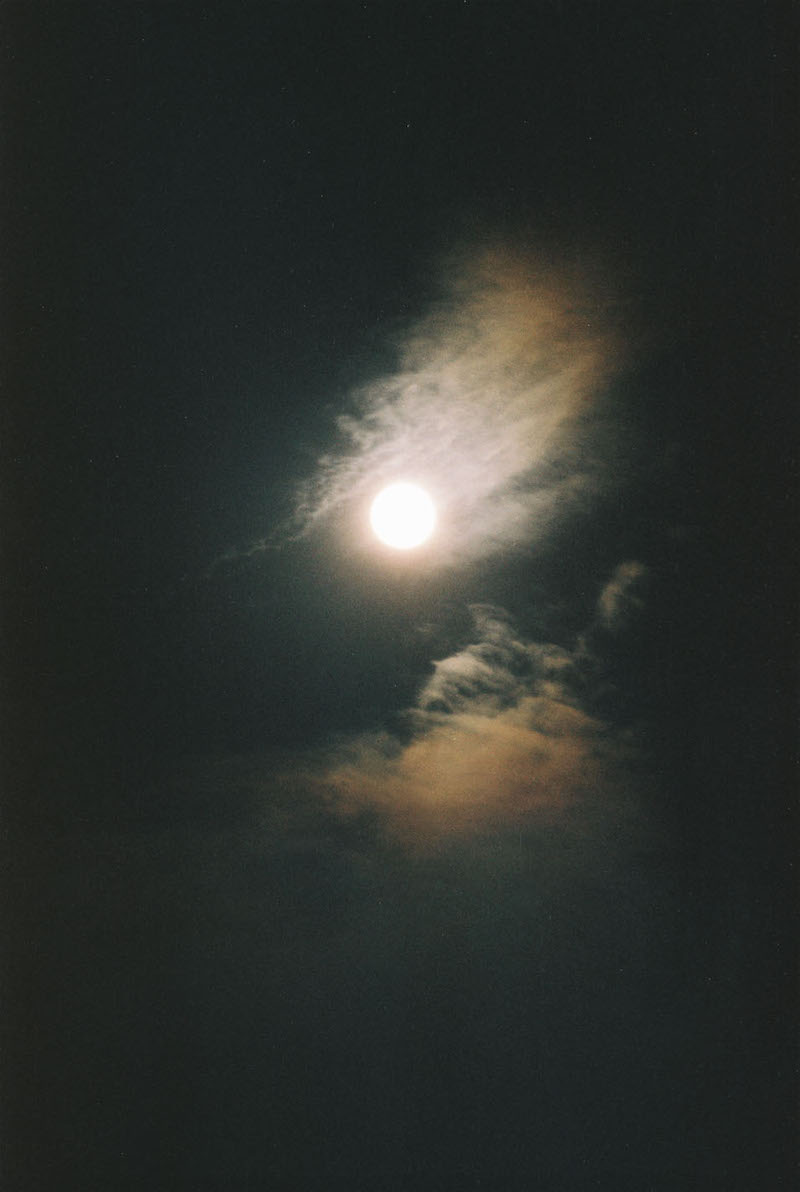 © Jonathan Schmidt-Ott, "Lunée"
© Jonathan Schmidt-Ott, "Lunée"
ALW: Another alienation effect you often use is the blurring of your motif, which I believe underlines a sensation that Patrick Reed describes as the "timelessness" of your images. In this series especially, but also in many other photos of yours, space and time seem to stand still –– conjuring up an almost frozen scene in which the only thing that matters is the frame that you choose to photograph.
JSO: I purposefully take pictures in a way that they are relieved from their original context and sometimes a blurry picture is better than a sharp one. Cutting off half of the horses' legs and instead only showing the sky behind them erases all spatial or temporal references.
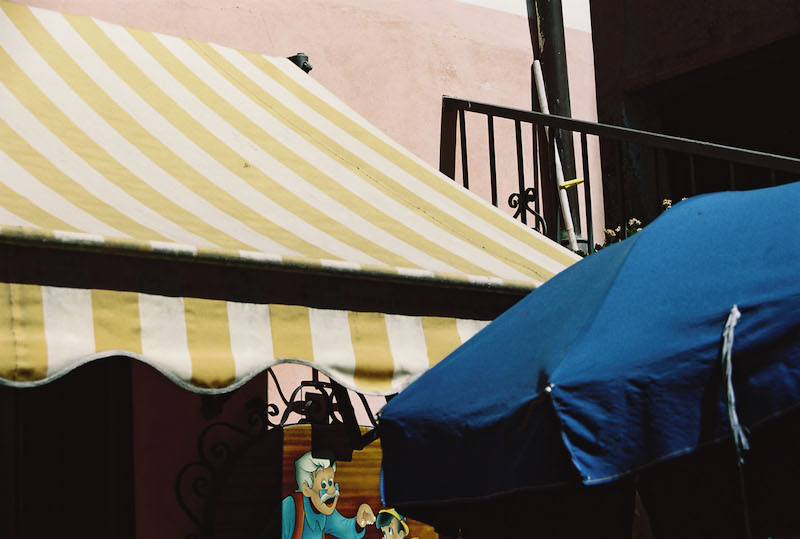 © Jonathan Schmidt-Ott, "Se Così Fosse"
© Jonathan Schmidt-Ott, "Se Così Fosse"
ALW: What is your relationship to time when you take pictures?
JSO: I have no feeling for time when photographing –– I get lost. It happens maybe two or three times a year that I am inspired to take a lot of pictures. Then I walk around and photograph as long as I can physically manage to squint one eye.
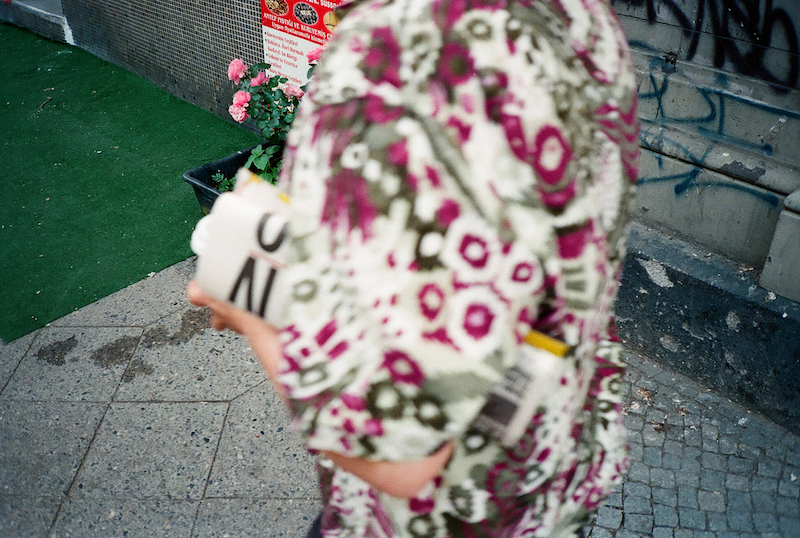
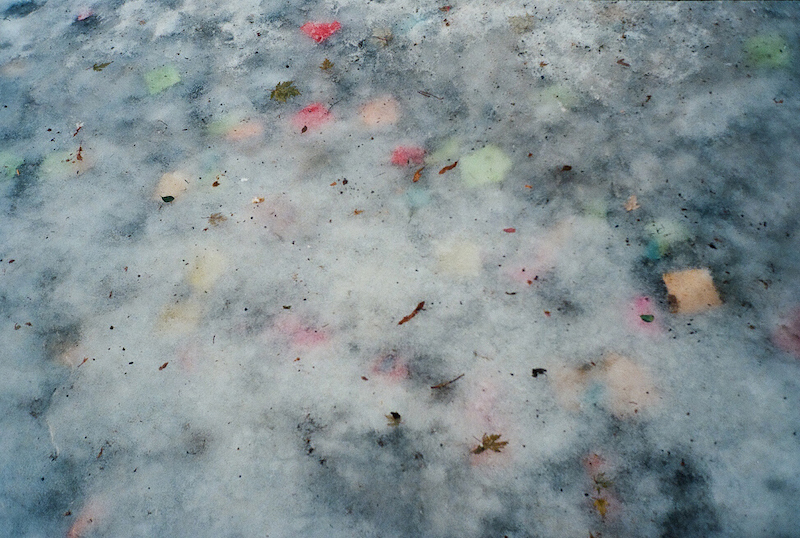 © Jonathan Schmidt-Ott, "Y"
© Jonathan Schmidt-Ott, "Y"

 © Jonathan Schmidt-Ott, "Y"
© Jonathan Schmidt-Ott, "Y"
ALW: You take pictures of your surroundings while traveling, for example to Tokyo or Belgrade, but many photos seem to emerge in everyday life moments, such as fragments of the sky or the floor under your feet. When is the right time to take a picture?
JSO: I love the practice of photographing and the act of composing the frame I choose, or giving it a certain tension. I always think about showing different perspectives of one situation in order to create a sequence, or a constellation from details and small fragments. Ideally, I imagine that when you are looking at a sequence, you feel like you are right inside of the scene it shows.
ALW: You often refer to the idea of the photographic sequence, which again relates to your work as a film editor, which you practiced for 15 years and studied at the Film University in Babelsberg. Your master thesis, which you wrote in the film theory class of Hans Lohmann, addressed the topic of "Artefact and Gestalt". After creating a stable and straightforward career in film editing, what made you decide to practice fine art instead?
JSO: Having worked 15 years in film editing, I realised that it wouldn't make me happy to always sit in darkened rooms in front of three monitors. I have huge respect for people who are able to do this job, because it demands an enormous amount of concentration and stress to bring film clips, sound and image together. You need to be creative all the time, while accepting the producers' changes and demands. During my studies I decided to create my own photo-film and went to Belgrade for six weeks to shoot it there. I'm not sure how it all happened, but the photo-film turned out to be the photo-book "White City". Nonetheless, I love editing and after having a break for a few years I am considering going back to edit my own projects.
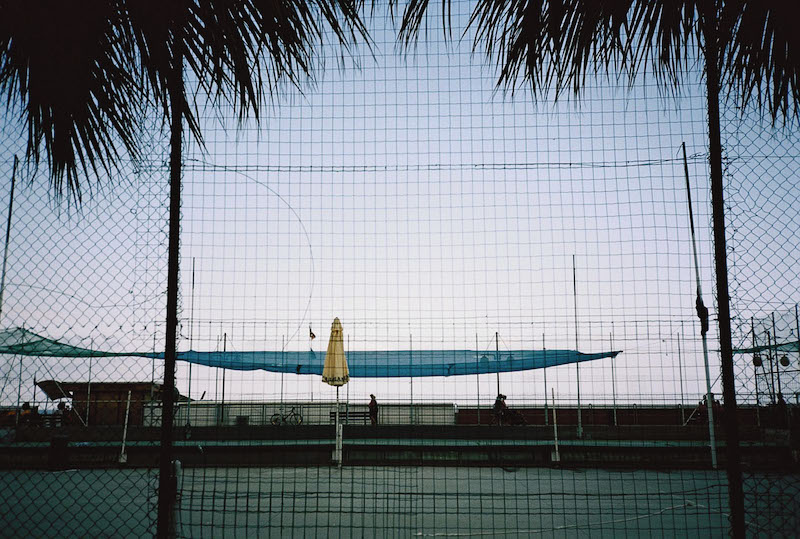
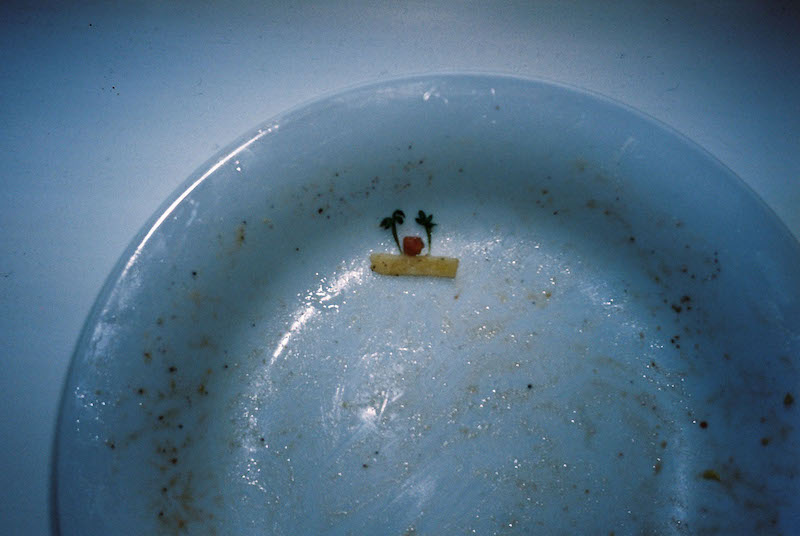
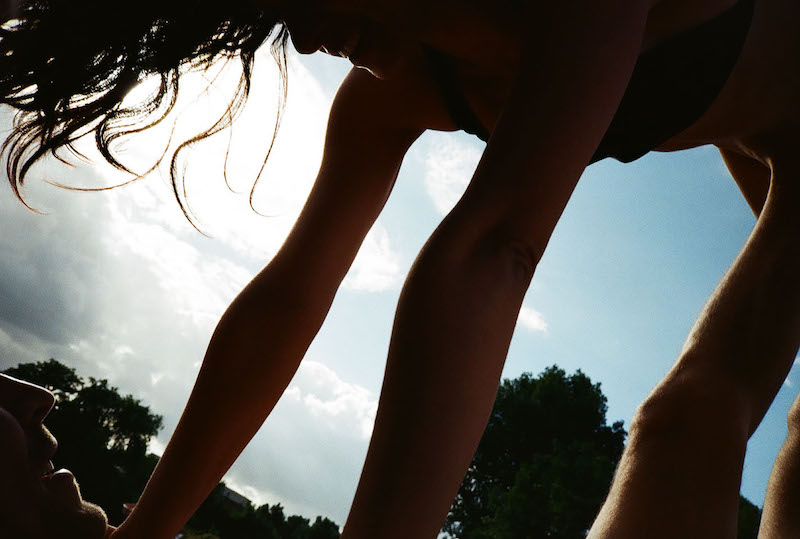 © Jonathan Schmidt-Ott, "ΖΩΗ"
© Jonathan Schmidt-Ott, "ΖΩΗ"


 © Jonathan Schmidt-Ott, "ΖΩΗ"
© Jonathan Schmidt-Ott, "ΖΩΗ"
ALW: Your newest book – the catalogue SE COSÌ FOSSE (2018) – assembles hundreds of photos and several sequences you created in the past years. Was there an emphasis on certain themes in the publication?
JSO: Not really, it was generally a very spontaneous decision – I produced the book in only 6 weeks with my friends Lewis Chaplin and Sarah Piegay Espenon who run the London-based publisher and design studio Loose Joints. This was by far the most beautiful editing experience I ever had – although he forced me to cut my initial selection of pictures down by two thirds.
ALW: How do you cope with the large amount of images in your archive?
JSO: It's almost impossible to keep an overview. Also in the publication –– it has 576 pages and over 300 images in it. Working in sequences with titles that turned into chapters really helped to structure it. Although getting lost is part of it.
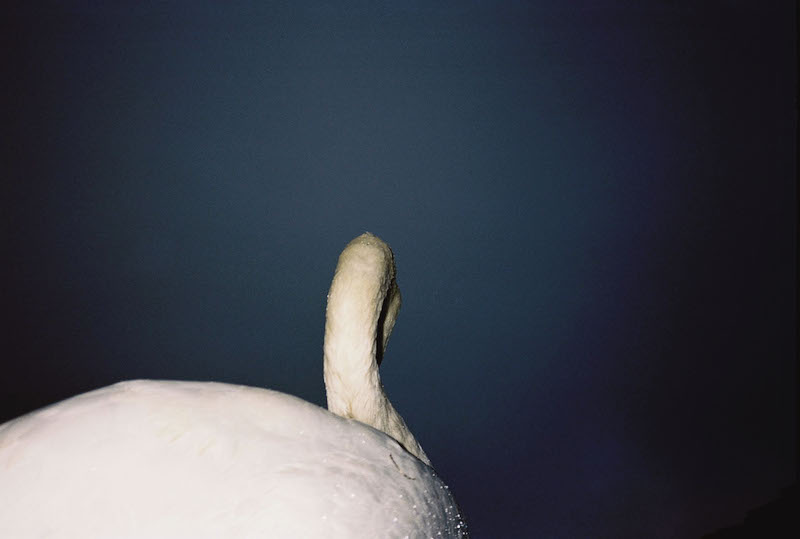
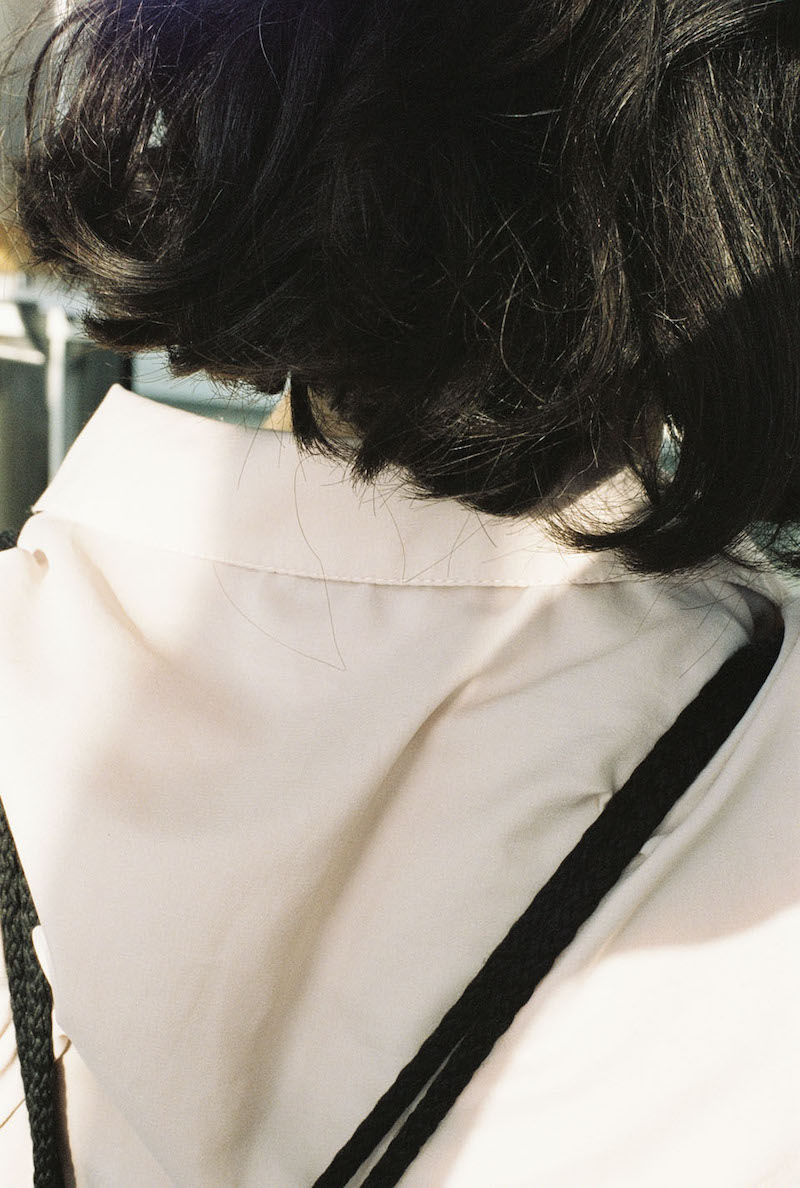

Above: "Fall", two images below: "VEN", all © Jonathan Schmidt-Ott



Above: "Fall", two images below: "VEN", all © Jonathan Schmidt-Ott
ALW: You told me that you find it difficult to take beautiful pictures. What are beautiful pictures?
JSO: It's impossible to define that. I remember reading a book about writing blockades during my studies, which encouraged writing without thinking too much about how it reads. The book left a big impression on my photographic work, because I often hesitated and perhaps thought too much about when an image, such as the sun, is too cheesy. When I started out it needed to be radical, cutting-edge, interesting and trashy. Throughout time my pictures became more and more simple and perhaps beautiful. I have my favourite protagonists, such as trees or animals, which I find very beautiful.
Shortened transcript of the artist talk with Jonathan Schmidt-Ott and Anna-Lena Werner held at Galerie Michael Janssen on the 12.01.2019. The exhibition continues until 16.02.2019.
Translation: Anna-Lena Werner
Proof: Claire Usiskin
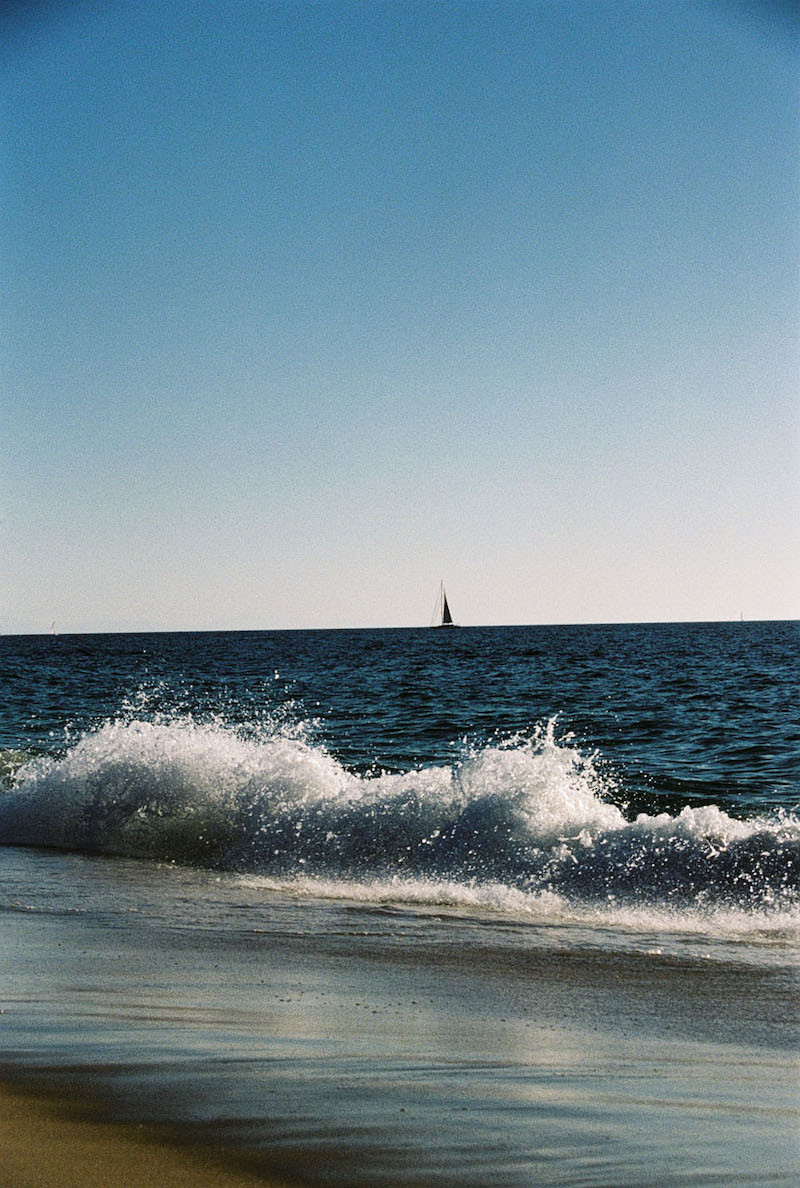 © Jonathan Schmidt-Ott, "Abyme"
© Jonathan Schmidt-Ott, "Abyme"